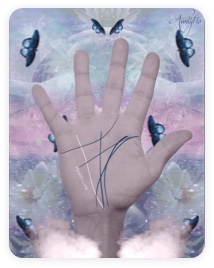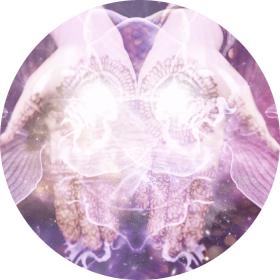The Wolf In Native American Culture And Spirituality

The Wolf In Native American Culture And Spirituality
Many people have emailed me to ask me what wolf means in Native American culture. Native Americans believe that we can transform into wolves, the Navajo used to have many different rituals and believed that there was a connection between wolves and the parallel universe. The spirit animal of many tribes is the wolf; for them, its presence often represents loyalty and perseverance. They believed that wolfs symbolize an impending journey that will help you grow spiritually and bring new lessons into your life. Wolves also have a highly developed social structure – since they commune together in packs and recognize each other's roles within their community – so they are also seen as symbols for family unity and harmony in tribal cultures.
What are the legends of Wolfs in Native American culture?
Legends about wolves have been passed down for centuries, and these tales form an important part of the culture of many tribes. One such legend is the story of Malsum, which is told by the Abenaki tribe in North America. According to this story, Malsum was a wolf god sent by the creator to help humans survive during times of famine. He also helped to protect them from other predators and kept their campfires burning all night long.
Other Native American tribes have their own versions of this type of fable, including tales from the Shoshone-Bannock people about a Gray Wolf who traveled around bringing luck and protection wherever he went.
Wolves are also featured prominently in stories written by authors like Charles Leland and Zitkala Sa. In his book Legends & Fables From Native America, Leland recounts 50 stories that feature wolves both as protagonists and antagonists – with some being highly revered spiritual beings while others being mischievous tricksters! And, in the book of Zitkala Sa’s that I bought from Amazon a few months ago and just got around to reading a spider-trickster deity usually seen as a wolf in animal form provides cautionary tales for children learning how to navigate life’s difficult paths.
In my research, the Native Americans have long been in awe of wolves and have told many stories about their relationship with them, I always feel that wolves formed our sort of love for dogs. The story of Ka'tsina, a spirit from the Hopi tribe, tells how wolves willingly sacrificed themselves so that humans could survive. According to the story, the Ka'tsina taught humans to share meat with other creatures while a great drought was going on --- and all creatures were starving. In order to save humans from starvation, four wolves decided they would create an opening in a steep cliff by pounding against it until they became exhausted and eventually died. This act allowed hunting parties led by humans to catch the game on both sides of this new passageway between two valleys - thus saving them from starvation.
This same deep-seated respect for wolf spirits can be seen in one version of The Origins Of World War II according to Hopi historians who tell us that when Europeans began settling in North America in large groups, certain animals acted as ‘protectors’ for native people by living among them and warning them when danger approached or being extra-vigilant if strangers were around seeking trouble or injustice. Wolves were often those protectors because they perceived danger far more quickly than any human and responded aggressively when necessary – similar to guard dogs used today but without any training from a man. The Europeans saw this connection between Native Americans and their Wolves as troubling at best since they had not created such ties with their own domesticated animals like sheep or even dogs which we easily managed through training – thus leading certain parts of Europe toward an unjustified fear of Native American peoples' closeness with Wolf Spirits which ultimately caused tensions that led up World War II according to these old stories still told among some tribal elders today!
Who is the wolf woman in native american culture?
In Navajo mythology, there is a chief deity and matriarch of all living things who takes on many forms in order to assume her multiple roles in creation. She transforms into a white she-wolf during her journey across the universe, teaching humans how to live and survive in their world. She was thought to be an exceptionally strong protector of children and families.
The Ojibwa People believed in Gitche Manitou, or “Creator” - also known as Grandmother Wolf and in the pictures in the books that I have read at the library on this subject there is an old female wolf with a shawl around its body that represents powers over nature and all living beings inhabiting it. Grandmother Wolf was greatly respected within the tribe; she was said to have taught others how to hunt for food while showing them patience when they weren’t able to find enough nourishment elsewhere.
In Hopi mythology, Ma'ii or Maíi itsámhiöhömö ("Wolf Old-Grandfather") plays an important role in representing wisdom and knowledge that we gain through age and experience. She is seen as an incredibly wise elder figure whose advice should always be followed when making decisions regarding life matters such as marriage or hunting expeditions for example.
Did dogs come from wolves?
I’m so interested as to where our love for our fluffy friends comes from, now, the evolution of wolves to dogs is incredibly complex and fascinating, which can be traced back tens of thousands of years. While the exact details are still up for debate among all the books I have read on my bookshelf, the general consensus as to how this happened is that wolves were domesticated by humans in different parts of the world at various stages in their evolutionary timeline.
In terms of Native Americans, it has been hypothesized that dogs were domesticated sometime between 9-14 thousand years ago from grey wolves. This theory suggests that hunter-gatherer humans living in Eastern North America found wolf pups and began raising them much like any other kind of livestock or work animal. Over centuries, these animals slowly adapted and diverged from their wild ancestors into domestic ones - eventually becoming what we know as modern-day dogs.
It's likely that some Native American tribes continued to cultivate this relationship with these now domesticated animals, further reinforcing the “particular behavioral changes” through selective breeding. This may have resulted in certain breeds being able to survive better on harder terrains or climates than others - making them more attractive companions for particular nomadic groups living off the land at the time such as Inuit peoples or Apache nations who lived across a wider range than many others did during pre-colonial times. It is my belief that even (if we don’t know dogs come from this) that our canine companions have come a long way since their first steps out of the forest and they continue evolving even today!
What does the wolf mean in other cultures?
In some Eastern cultures such as those in Asia, wolves demonstrate leadership through their social behavior based on loyalty and hierarchy known famously as ‘alpha male'. The alpha male is seen to be responsible for leading his pack mates including looking after younger members which is a concept frequently seen in many Asian spiritual texts ranging from Hinduism to Taoism – where certain gods appear in similar hierarchical environments amongst their followers most commonly named 'pack' or 'herd'.
In Europe and Christianity traditionally wolves are seen not just spiritually but also as physical creatures capable of attacking livestock herds (and villagers). However during this period although real-life fear was prominent belief systems began incorporating aspects more associated with positive symbolism - implying power by associating families’ dynasties with its royal crest containing images associated usually with bravery such as armored knights riding horseback or eagles/hawks swooping down within moments while others had less obvious symbolic links to nature including depictions featuring bears or even wolves leading over other animals which all reflected qualities desired by those wishing rule - power and dominance!
What can we learn from wolves?
When it comes to wolf traits, there are numerous qualities and characteristics that make the wolf one of the most impressive creatures in the animal kingdom – and something we can look to for inspiration.
I’m sure you will agree wolves are fiercely loyal, both to their packs and family members. Wolves often stay with their families throughout their lives, making a lifelong commitment similar to human marriage. This intense loyalty makes them great teachers when it comes to trustworthiness and unwavering devotion.
Wolves also have an incredible sense of teamwork and collaboration when it comes to protecting each other in times of danger or going hunting together. They understand that they need support from those around them in order for survive - so they never leave anyone behind during hunts; any member of a pack who returns with food will share its catch with the whole group! We can certainly learn from this example how valuable cooperation is within our own relationships, communities, and work teams.
The strength of wolves is another admirable trait; not only do they put up huge fights against predators such as bears or mountain lions but they're also incredibly resilient when facing challenging times such as weather fluctuations or scarce food. The lone wolf is full of determination despite all odds, this (spiritually) encourages us similarly strive towards our goals despite potential setbacks!
Conclusion
I’m glad you got this far, so overall my feelings are that Native American legends about wolves draw on a range of fascinating traits that make them truly unique - be it mystical powers or mischievous behavior - making them deeply ingrained within tribal cultures across North America!
By Flo Saul
Jun 18, 2023







